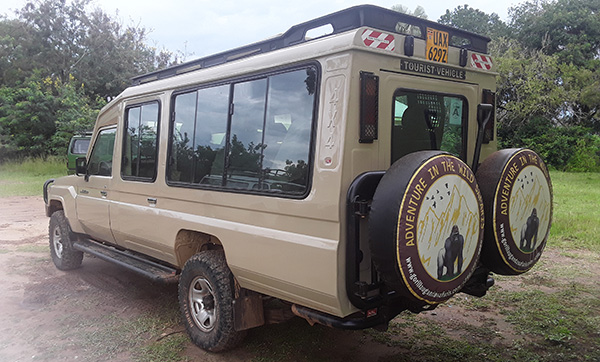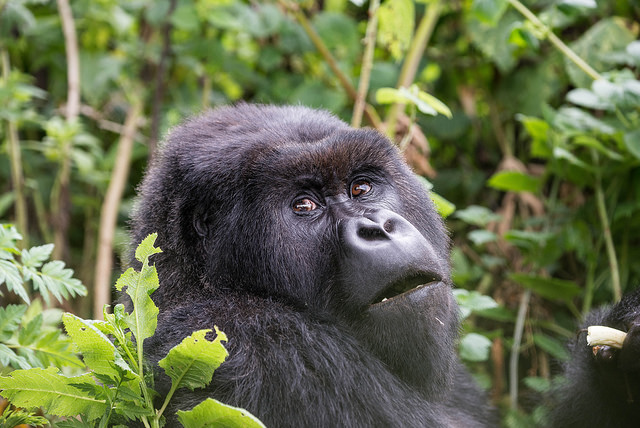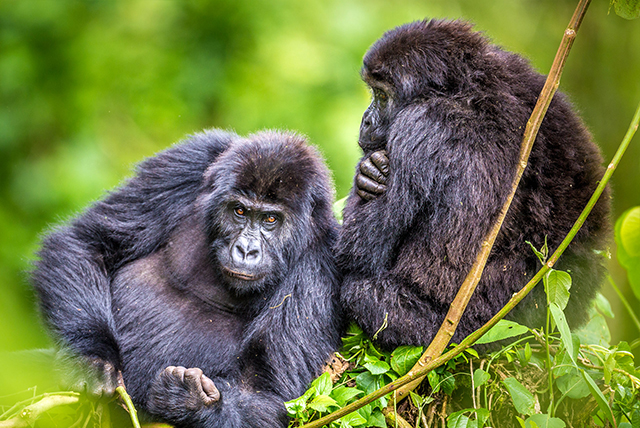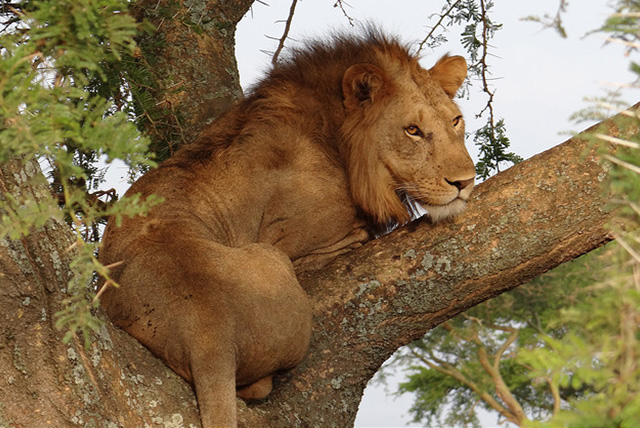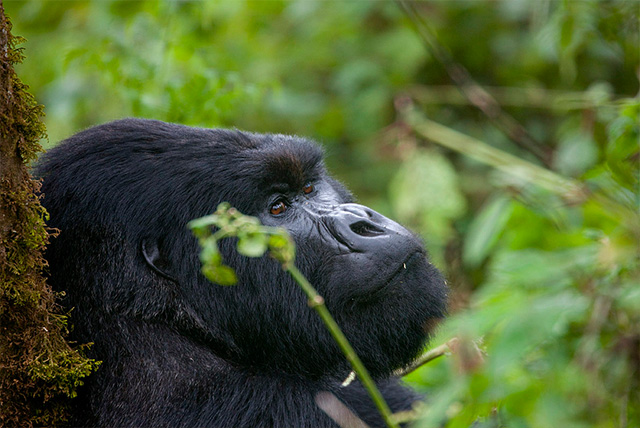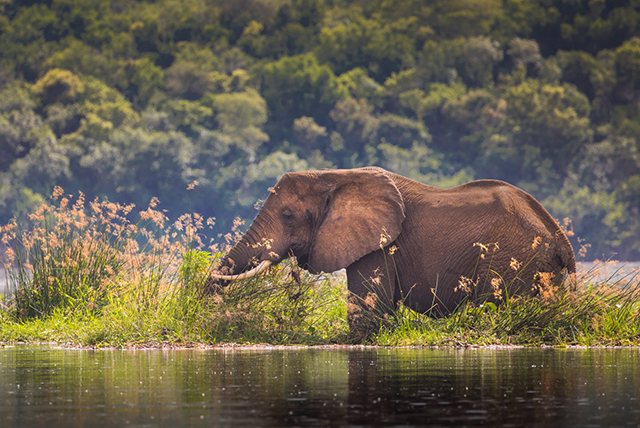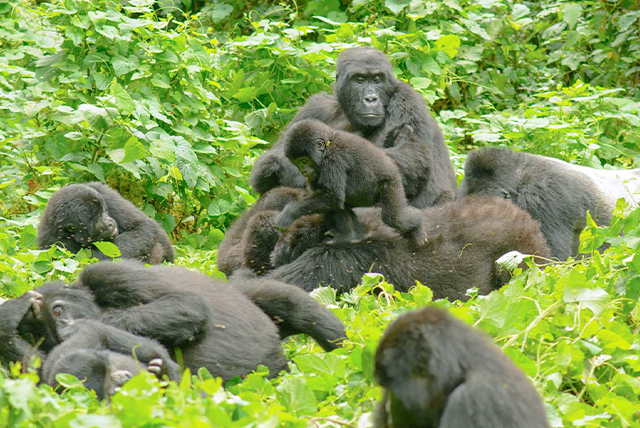Guide to Zambia Culture, History and Traditions
Guide to Zambia Culture, History and Traditions
This Zambia Travel Guide serves as a gateway to exploring this incredible African country. Exciting new safari destinations in Zambia, like Kafue National Park, alongside the well-known parks such as South Luangwa, provide incredible opportunities for wildlife viewing. Zambia is renowned for its innovative approach to the walking safari.
Some say Zambia is a hidden gem in Africa, an uncharted paradise for a range of safari and game viewing experiences. It is an authentic piece of Africa, welcoming and brimming with untouched wilderness that beckons to any explorer!
Zambia is a landlocked country perched on a plateau, featuring stunning valleys, hills, and a few mountains. The Zambezi River flows through it, accompanied by its tributaries, the Luangwa and Kafue. Zambia is nestled among a diverse array of neighboring countries, including the Democratic Republic of the Congo, Angola, Namibia, Botswana, Zimbabwe, Mozambique, Malawi, and Tanzania.
In northern Zambia, you can find three remarkable natural lakes: Bangweulu, Mweru (which it shares with the DR of Congo), and the southern part of Lake Tanganyika, known for being one of the deepest natural lakes globally. On the southern border of Zambia lies Lake Kariba, the largest man-made lake in Africa and one of the largest in the world. Nearby, the magnificent Victoria Falls captivates with its breathtaking beauty and allure.
Zambia boasts enchanting miombo woodlands, expansive lakes, and extensive floodplains, alongside breathtaking waterfalls and powerful rivers. It stands as one of the final untouched wild expanses in Africa, often regarded as a hidden treasure. Regardless, the wildlife thrives, and the locals are welcoming.
Atmospheric conditions
Zambia experiences three uniquely vibrant seasons.
1. From December to April, the weather is characterized by warmth and moisture, often accompanied by intense rain showers that typically occur in the late afternoon.
2. The months from May to August bring a dry and refreshing atmosphere, with temperatures gradually dropping as this time draws to a close.
3. From September to November, the weather is characterized by dryness and heat, with temperatures rising as this period comes to a close.
The typical summer temperature ranges from 25°C to 35°C (77°F to 95°F), while winter temperatures vary from 6°C to 24°C (43°F to 75°F). Zambia boasts a climate that is often mild, though the valleys can experience a surge of intense heat.
The nights tend to have a refreshing chill all year round. The ideal time to observe wildlife is during the dry season when the vegetation is less dense, providing enhanced chances to spot the animals.
Chronicles of the past
The history of Zambia reaches deep into the past, with signs of human presence dating back an astonishing 3 million years. The captivating journey through the Stone Age took a turn with the arrival of immigrants from northern Africa between 300BC and 400AD, marking the early days of the Iron Age.
Significant transformations took place with the arrival of European traders in the 15th Century and the onset of slavery, along with the migration of Zulu tribes onto the land from Southern Africa in the early 19th Century.
English explorers embarked on thrilling expeditions into the heart of the continent from Southern Africa, marking the dawn of a new era that ultimately led to British colonial rule in what was then known as Northern Rhodesia.
The unearthing of copper and its extraction in the late 1920s propelled this Copperbelt into the global spotlight. The journey towards independence and joining the Commonwealth unfolded in 1964.
Demographics
Zambia is home to a rich tapestry of over 70 tribes, with a population of around 10 million people. Urban areas are bustling with vibrant populations.
Zambians are warm and welcoming, eager to engage in conversation and learn about others while happily sharing insights about their own country. Travelers will find that many villagers along the main roads are ready to offer tire mending services for a small fee!
Communication
Zambia boasts a rich tapestry of over 70 different dialects, with English serving as the official language. It is widely spoken, and most Zambians possess a solid understanding of it. The next language that many people grasp is Bemba, accompanied by at least six more intriguing options.
Faith
Most Zambians embrace Christian beliefs, while there are also vibrant Muslim and Hindu communities present. Traditional African beliefs are abundant as well.
Heritage
In rural areas, traditional ceremonies and cultural practices thrive among the various tribes, while urban areas are often influenced by western ideas and aspirations.
Opportunities to witness traditional ceremonies are rare gems, waiting to be seized for a truly immersive Zambian experience; these vibrant events are rich in significance, making them a photographer’s paradise!
When it comes to photography, it is essential to seek permission from the local people before capturing any moments. Always begin with greetings at the start of any conversation—this is a fundamental aspect of engaging with the Zambian people, as it is deemed impolite to dive into a conversation without first exchanging pleasantries.
Numerous traditional musical instruments continue to play a vital role today, including the hand piano, the silima (a type of xylophone), and a diverse range of drums, all essential for ceremonies and community interactions. Traditional dance plays a vital role in the vibrant tapestry of Zambian culture.
Zambia boasts a vibrant population, showcasing an array of artistic talents, particularly in the realm of stunning basketry, where the artisans of the western provinces truly excel. The art of crafting and firing traditional pottery continues to thrive. Crafters in the cities have begun to embrace contemporary materials, transforming everyday items into an array of practical creations.
In Zambia, a staple dish known as nshima takes center stage, crafted from ground maize. It starts off resembling a sweetened cooked porridge for breakfast, then transforms into a thicker consistency akin to mashed potatoes for savory meals at lunch and dinner. This versatile dish is frequently accompanied by chicken, meat, or fish, making each meal a delightful experience. While the lodges, hotels, and camps in Zambia offer top-notch international cuisine, this dish can frequently be made in safari camps upon request from visitors.
Urban landscapes
LUSAKA – The vibrant capital city that serves as a gateway, connecting travelers to every corner of the land. It captivates a diverse crowd, lured by the vibrant lifestyle and exciting job opportunities.
LIVINGSTONE – Renowned as the hub of excitement, it lies just 10km (6 miles) from the majestic Victoria Falls. Numerous adventure companies are based here, offering thrilling activities like bungee jumping and white water rafting.
The COPPERBELT – includes the vibrant mining towns of Ndola, Kitwe, Chingola, and Luanshya. Additional towns are:
CHIPATA – A vibrant town that has a rich history as a significant trading hub. It serves as the entrance to the Luangwa Valley and Malawi.
CHOMA – Nestled between Lusaka and Livingstone, this spot boasts a museum and craft centre waiting to be explored.
ISOKA – Located just off the Great North Road, featuring essential amenities and a stunning set of waterfalls in close proximity.
KABWE – A place where the prehistoric Broken Hill Man was discovered, it also boasts other intriguing sites such as The Big Tree and a mine.
KAPIRI MPOSHI – A quaint railway town, perfect for refueling before setting off on your next journey.
KASAMA – A vibrant town brimming with a variety of amenities.
KAZEMBE – A quaint town nestled along one of the finest roads in the nation, renowned for its vibrant annual ceremony that takes place in late July.
MANSA – A vibrant hub in the Luapula province, nestled near the Copperbelt.
MBALA – Once a bustling hub of activity during the First World War, this town now offers a serene atmosphere, complemented by a fascinating museum in the vicinity.
MKUSHI – A quaint farming town nestled along the Great North Road, offering essential amenities.
MONGO – A vibrant town perched above the expansive Zambezi River floodplain. The vibrant essence of traditional culture comes alive here through an annual ceremony and captivating crafts, complemented by a fascinating museum.
MPIKA – A vibrant town along the Great North Road, offering excellent amenities and rejuvenating hot springs.
NCHELENGE AND KASHIKISHI – two charming villages on Lake Mweru offering essential amenities.
SERENJE – A quaint town along the Great North Road, offering basic amenities and a charming restaurant.
SIAVONGA – Nestled on the north shore of Lake Kariba, this destination boasts excellent amenities and offers the thrilling experience of walking along the impressive Kariba Dam wall.
Money
The national currency is the Kwacha, featuring a variety of denominations from 50 to 50,000 kwacha notes. The currency’s value fluctuates frequently, so it is wise to keep an eye on it regularly. Currency exchange is most favorable at banks or Bureaux de Change in Zambia’s main cities; travelers may also bring small denominations of US Dollars, but Kwacha will be essential for rural areas.
The bank is open from 8:15 AM to 2:30 PM, Monday through Friday, and from 8:15 AM to 10:30 AM on the first and last Saturdays of each month. Most hotels, restaurants, travel agencies, and larger shops welcome credit cards.
Best Time to Visit
WARM AND ARID: The ideal time to explore Zambia for wildlife sightings is from August to October. Keep in mind that temperatures tend to rise as this period progresses, particularly in the valleys and low-lying regions, where many of the National Parks are located.
EXCITING AND REFRESHING: From May to August, experience the thrill of cooler weather and lush greenery all around.
WARM AND WET: The rainy season spans from November to April, during which some of the National Parks may close their doors.
Lodges that stay open often provide great rates, and the abundant vegetation can make spotting animals a bit more challenging. However, they typically venture to higher ground, allowing visitors to enjoy a more tranquil experience as the Parks are less crowded. Canoe and boating escapades thrive during this season, as migratory birds make their arrival.
During the rainy season, numerous roads become unreachable, yet the avian life in November and December flourishes remarkably. Zambia is a paradise for bird watchers throughout the year.
AIR TRAVEL: The road distances are vast, prompting many visitors to seize the opportunity of scheduled and charter air services. Departure taxes, not included in the air tickets, must be paid in US Dollars at both domestic and international airports.
ROAD TRAVEL: Experience the thrill of driving on the left-hand side of the road, where the general speed limit is set at 100km/h (62 miles/h) on national highways and secondary roads, and 65km/h (40 miles/h) in urban areas, unless indicated otherwise.
Numerous rural roads become untraversable during the rainy season. While some paths can be navigated with regular vehicles, reaching the most breathtaking locations requires the thrill of off-road vehicles. When embarking on a road trip, it is crucial to pack tools and essential spares, along with water and other necessities such as rope, a spotlight, and a winch.
The state of the roads can change dramatically and may often be quite challenging. Repairs are always in progress, so visitors should remain vigilant and cautious. Visitors might come across unexpected potholes, majestic wildlife on the move, pedestrians, vehicles lacking lights, breakdowns, and a variety of driving challenges.
Fuel can be found in nearly every town, though prices tend to rise as you venture further from the railway line; it is wise to always have extra supplies on hand. All essential documents, such as an International driver’s license or a SADC license, should be securely stored and readily available for quick access.
In Lusaka, the thrill of exploration comes with its challenges; visitors should take careful precautions or avoid leaving their vehicles unattended. Ensure that no items are left in the vehicle at any moment.
BUS SERVICES: Enjoy the convenience of regular, tidy bus services connecting Lusaka to all major towns. Minibus and taxi transport, all adorned in blue, is readily available for hopping on and off as needed. Visitors can also engage with the driver to arrange a private hire. International services are available to Harare and Johannesburg.
TRAIN SERVICES: You can discover train services connecting Livingstone to Lusaka, Lusaka to the Copperbelt (Kitwe), and Kapiri Mposhi to the Tanzanian border. Travelers are encouraged to reserve a family compartment in First Class for overnight journeys and should remember to pack all necessary supplies, including drinking and washing water, as well as food. The trains may have a worn charm, but the linen is quite lovely.
Liquid
In Zambia, tap water undergoes treatment, but it is advisable to boil it, particularly in rural regions. However, if you are staying at a lodge or hotel, this precaution is typically taken care of. For those seeking a convenient option, bottled water is readily available for purchase in larger towns.
Exciting destinations in Zambia
VICTORIA FALLS: Stunning and breathtaking, these magnificent falls on the powerful Zambezi River at the border of Zambia and Zimbabwe, stretch nearly 2km (1.24 miles) wide. The water roars as it cascades over the cliff, plunging into a profound gorge that lies more than 100 metres beneath. The columns of spray are visible from great distances, captivating countless adventurers and travelers throughout the years. It is an incredible place for exploration.
ZAMBEZI RIVER: The fourth largest river in Africa winds its way through six countries, beginning in central Africa and flowing into the Indian Ocean. Remarkably strong, it has shaped the majestic Victoria Falls and the stunning Batoka Gorge. It boasts a safeguarded status at multiple locations along its banks, offering visitors an opportunity to immerse themselves in the stunning landscapes and vibrant wildlife sanctuaries. The Kariba Dam, straddling the border between Zambia and Zimbabwe, captures the essence of energy through hydroelectric power.
LAKE KARIBA: With its vast expanse resembling an ocean, this enormous record-breaking man-made dam stretches an impressive 226km (140 miles) long and reaches up to 40km (25 miles) wide in certain areas. A vibrant holiday destination, reminiscent of a Riviera, boasting delightful weather throughout the year, along with resorts, fishing, houseboating, and a variety of water sports. Crafted from the flowing waters of the Zambezi River and featuring a remarkable dam wall, it also generates hydroelectric power for both Zambia and Zimbabwe.
LAKE TANGANYIKA: The pristine waters teeming with vibrant fish create an exhilarating lakeside getaway. This inland sea is embraced by the borders of Tanzania, Burundi, the Democratic Republic of the Congo, and Zambia. Visitors staying here can immerse themselves in a variety of thrilling activities, including scuba diving, fishing, and game viewing, as well as exploring hot springs, rainforests, and waterfalls, not to mention the excitement of cruising.
ZAMBIAN WATERFALLS: Zambia boasts an abundance of stunning waterfalls, with around 12 major ones primarily located in the northern and northwestern regions of the country.
CHIMP SANCTUARY: Nestled west of Chingola along the Kafue River in the wilds of northwestern Zambia lies the Chimfunshi Wildlife Orphanage, a haven for chimpanzees and an array of other animals in need of care. The sanctuary marks a remarkable 25 years of commitment and compassion in 2008. Every contribution and thoughtful visitor is embraced with open arms.
SHIWA NGANDU: An historic working estate features a magnificent manor that gazes over a serene lake, constructed in 1932, making it a unique gem in this secluded region of Zambia. Farming and safaris thrive in this vibrant area; visitors can enjoy hot springs, waterfalls, scenic walks, boat trips, and fishing on the lake.
LAKE BANGWEULU: A breathtaking lake, remarkably pristine, still untouched by development but brimming with possibilities, it serves as a captivating destination for those seeking excitement.
LAKE MWERU: A stunning lake that straddles the borders of Zaire and the Democratic Republic of the Congo. The lake is home to a vibrant community of individuals who thrive along its shores, drawing their livelihoods from its inviting waters.
LIVINGSTONE MEMORIAL: This tribute to the daring explorer, David Livingstone, who sought the source of the Nile and journeyed across much of southern Africa, is situated at the spot where he took his last breath beneath a tree in 1873. The memorial now proudly occupies this location. The journey to the location is captivating, nestled between the town of Serenje and the stunning Kasanka National Park.
MONUMENTS AND HISTORICAL SITES: A collection of 15 captivating sites and monuments awaits exploration. Explorers can discover a fossil forest, rock paintings, ancient rock formations, shelters and engravings, colonial monuments and memorials.
M–UMS: Found in Choma, Ndola, Livingstone, Mbala, Lusaka, Mongu, and Victoria Falls.
ART GALLERIES: Lusaka boasts 6, while Livingstone has 2 waiting to be explored.

